There are many diverse culinary experiences to be had in Taiwan. While you can have an authentic Aboriginal meal at places like the Leader Village in Taroko National Park, a visit to a Buddhist monastery will likely immerse you in a world of innovative vegetarian cooking.
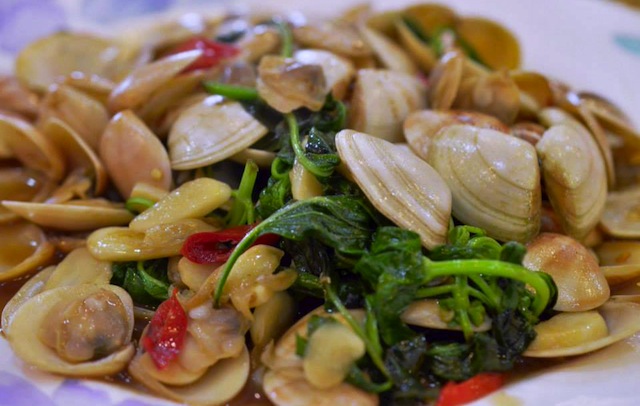
No matter where you travel through the country, however, you’ll find Taiwanese staples like bubbling hotpots, eel noodles, tapioca dough stuffed with pork, bamboo and mushrooms (ba-wan) and chicken topped with rice wine, sesame oil and soy sauce (sanbeiji). Certain spices and flavorings — like soy sauce, rice wine, fermented black beans, Chinese basil, peanuts and cilanto — are prominent on most menus. Above: Ba-wan. Photo courtesy of Takoeadee.
Homebased in Taipei, I’ve been able to learn a lot about traditional Taiwanese culinary culture through the city’s plethora of typical restaurants. The influence is mainly Chinese due to the fact 98% of Taiwan’s population is composed of Han Chinese people, while only 2% are Taiwanese aborigine. Additionally, a Japanese influence can be seen in the food from the time when Taiwan was under Japanese rule. That being said, in the capital you’ll also find everything from Mexican to Italian to Modern Taiwanese right down to a Barbie cafe serving decadent sweets and cocktails laden with processed sugar.
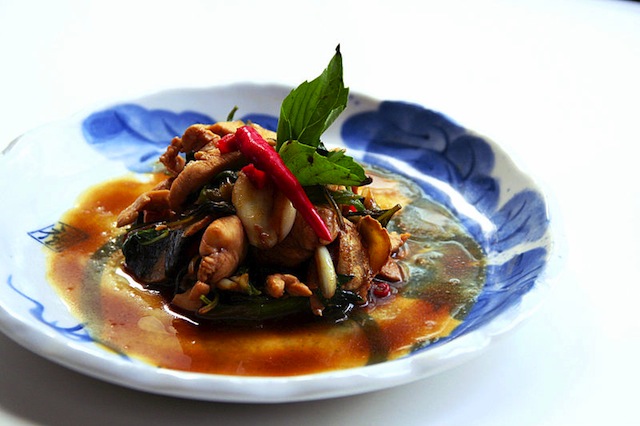
I decide I want to get away from the fast pace of Taipei and its global culinary influence and head somewhere relaxed and authentic Taiwanese: Fuji Harbor. My local guide in Taiwan, Michelle Cheng, tells me this is where locals go on weekends to spend the day people watching in cafes, enjoying traditional seafood lunches, taking in scenic water views and purchasing the day’s fresh catch from the market.
What better place to sample a waterside seafood lunch?
“You can’t get seafood fresher than this,” explains Michelle. “Everything you’re eating was alive 10 minutes ago.”
We’re at Chiu Fresh Seafood Restaurant in the Fuji Harbor (FuhjiYugang) neighborhood, having a meal at Michelle’s favorite seafood restaurant. Outside of the establishment are numerous red and orange baskets containing all types of tasty marine creatures: local lobster, sea urchin, octopus, abalone, clams, flowered crabs, prawns and big tanks full of snapper, bream, grouper and other local fish caught basically on the premises.
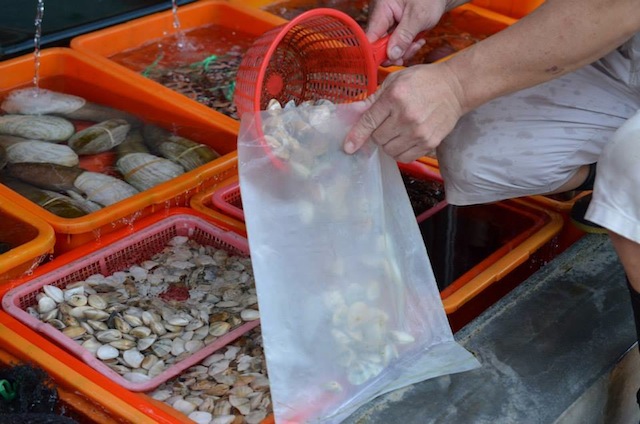
The way the restaurant works is you tell staff what you want to eat, actually pointing it out while it’s still alive in the baskets and tanks — so you know your meal is as fresh as possible.
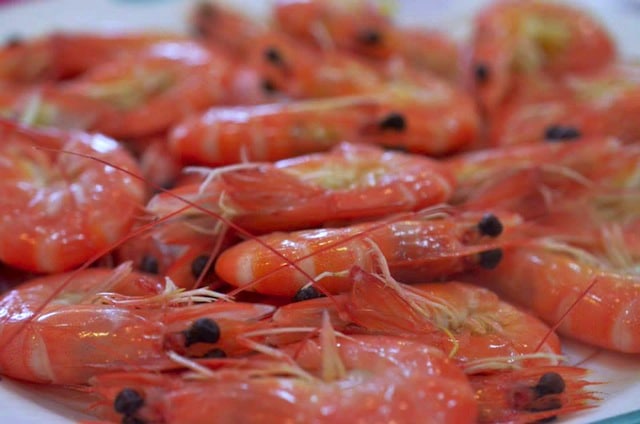
Inside, there are a few round tables set with red table clothes and small flowered bowls. Michelle has chosen a few dishes for us, although I don’t ask what as I want it to be a surprise. The restaurant owner brings us a ceramic teapot of green tea, along with a pitcher of homemade plum wine, which features fruit that has been fermented for a year.
Plums are a staple of the Taiwanese diet, as it grows prevalent and is also used in Chinese medicine, so it’s not surprising they use them to make drinks. The restaurant features a laid- back ambiance that is typical of Taiwanese restaurants, and I’m poured a glass of wine into a paper cup. I swirl it around a bit — unsure if that’s a weird thing to do when not drinking from a wine glass — and take a sniff. The scent of sweet plums is impossible not to miss, and when I sip I’m surprised I can actually taste the alcohol. I make a note to purchase a bottle before I head back home.
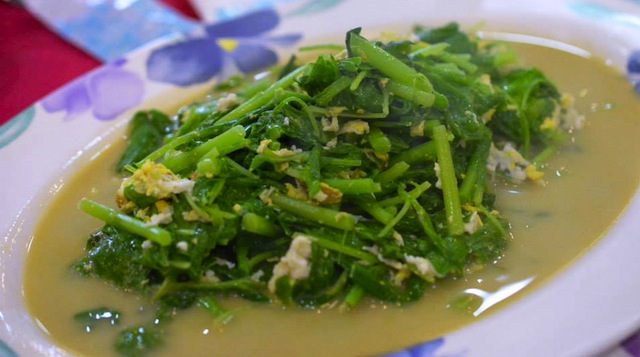
It doesn’t take long before the dishes begin arriving. While the grilled prawns taste clean and full-flavored, a heaping plate of pigweed (Chinese spinach) with battered egg pairs perfectly for a protein rich dish that has buttery accents (but, I’m assured, is not made with butter).
A platter of seed clams is presented with Chinese basil in a light brown garlic sauce, which I spoon on top of a bowel of plump fried rice kernels mixed with green onion and egg. The chow rice, or wok fried rice, is nothing like the pork fried rice I eat at home, as the dish is less focused on oil and more on letting the onion enhance the flavors.
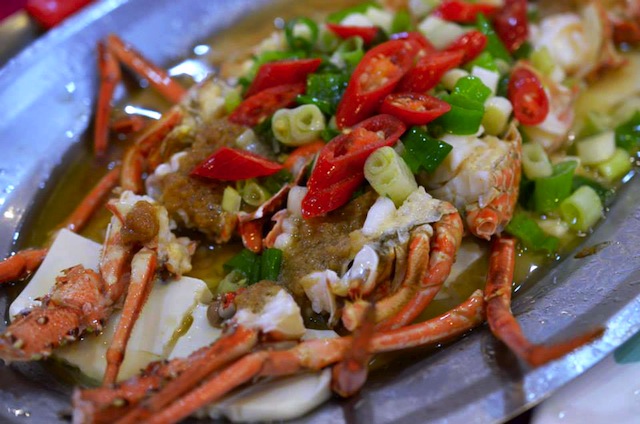
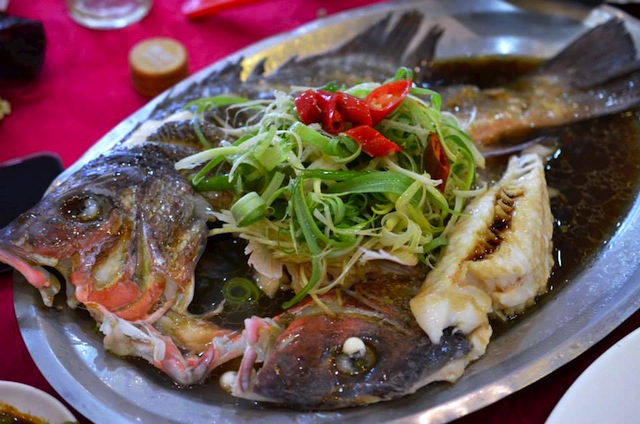
Because I’m a spice addict, my two favorite dishes are the local lobster served with spicy hot peppers in a garlic sauce, and a sea bream presented also with spicy red hot peppers and scallions. The lobster doesn’t taste like the giant red Maine lobster I’m accustomed to, but is delicious with a softer texture and saltier taste. Note you will need to work hard to get this meat, but it will be worth it. Additionally, the sea bream tastes similar to sea bass, lacking a fishy taste but instead offering a hearty white meat with a buttery texture and salty, savory flavor that’s especially delicious paired with the hot peppers.
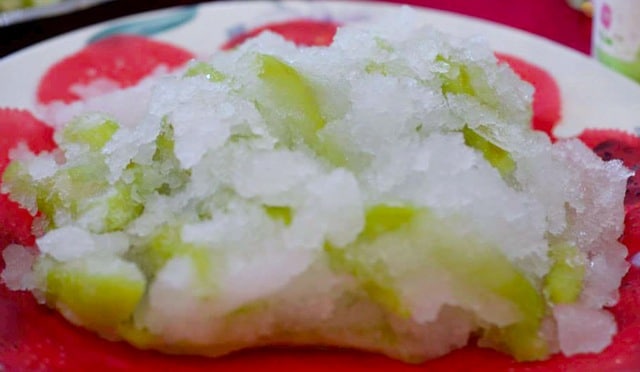
To clean and cool our palates, we’re brought a refreshing bowl of fermented mango mix with ice. While I’m not a big fan of crushed ice or slushies, the sweet treat is more like a homemade Italian ice made with real fruit. Moreover, any flavors of pepper seed or sea bream that had been lingering on my tongue have been completely cleaned away, replaced by the juicy sweet taste of tropical fruit. Screw chocolate cake. Taiwan has introduced me to my new indulgence of choice.
After lunch the group takes a walk along Fuji Harbor, watching the fisherman come in with their wares. It’s nice to take in everyday life as it naturally unfolds, as it helps me understand exactly where my freshly prepared meal came from. Wondering what exactly these fisherman are bringing on their boats, we cross the street and head to the local fish market.
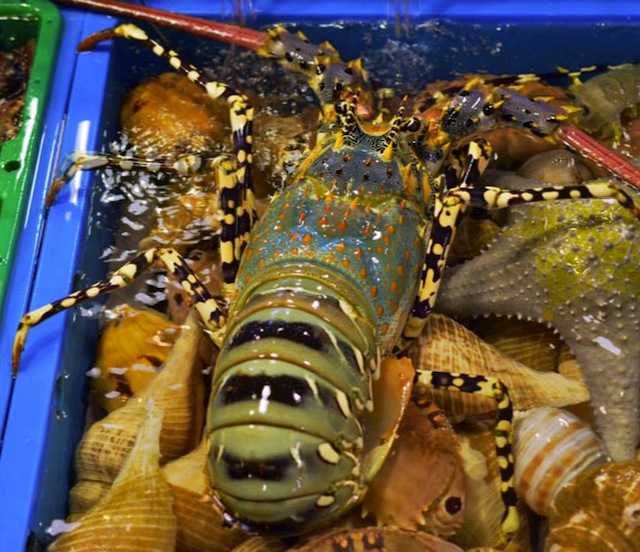
At the fish market the calm vibe of the group turns giddy as we’re immersed in a world of marine animals we’ve never seen before, many of which we can’t believe are sold for human consumption. Along with fish intestines and enormous mullet fish penis there are giant horseshoe crabs; colorful flowered crabs; football-sized and spotted papaya snails; elephant clams with long trucks; spiky sea urchin; slimy sea cucumbers; insect-like tank lobster; and much more. My favorite find is the rainbow lobster. While the body structure is similar to the lobsters I’m accustomed to in the United States, the creature features skinny black legs with wild yellow spots, a sky blue and pistachio green body with bright orange bumps, and a tail with black tiger stripes. It’s the most beautiful and unusual animal I’ve ever seen.
What’s especially interesting to me that the seafood market is almost entirely run by females who have no fear of holding lobsters and crabs that are almost half their size. I can’t think of a better way to spend an afternoon, especially as it’s been such a fun way to explore Taiwanese culinary culture.
Essential Information
When visiting Taiwan it’s a good idea to hire a local guide, as transportation can be difficult to navigate and language barriers are prominent.
To get to Fuji Harbor, take MRT (subway) to Damsui station than take a taxi or bus to Fugi harbor. The taxi fare is about NT$500 (about $17 USD) and the bus fare is about NT$60 (about $2 USD). The distance from Damsui to Fugi is about 21 kilometers (13 miles). The bus is bound to Jinshan or Keelung.
The main road the restaurant is on is Provincial Highway 2.

Jessica Festa is the editor of the travel sites Jessie on a Journey (http://jessieonajourney.com) and Epicure & Culture (http://epicureandculture.com). Along with blogging at We Blog The World, her byline has appeared in publications like Huffington Post, Gadling, Fodor’s, Travel + Escape, Matador, Viator, The Culture-Ist and many others. After getting her BA/MA in Communication from the State University of New York at Albany, she realized she wasn’t really to stop backpacking and made travel her full time job. Some of her most memorable experiences include studying abroad in Sydney, teaching English in Thailand, doing orphanage work in Ghana, hiking her way through South America and traveling solo through Europe. She has a passion for backpacking, adventure, hiking, wine and getting off the beaten path.








